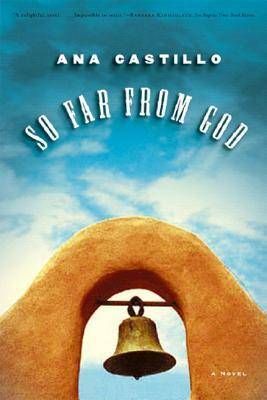The hierarchical basis of our society breeds oppression. The dualistic thinking that neatly divides the world into the dominant and the subordinate justifies the exploitation of both women and nature. In the patriarchal narrative both women and nature are objectified, existing for masculinity or technology to establish dominance and extract value as defined by the patriarchal and capitalistic hegemony. Because of gendered division of labor and the humongous amount of unpaid work that is performed by women all over the world, environmental degradation often hits them first, and harder than men. Ecofeminism recognizes this interconnectedness and seeks to establish a framework that looks at feminism and ecological concerns in tandem.
The dominant social narratives always find their way into literature. There is a marked similarity between the essence of the language that is used to describe nature and the language that pigeonholes and objectifies women in much of literature. Nature is often portrayed either as pristine, virginal, or as a menacing and destructive force that needs to be conquered. Just as many authors have been deconstructing and redefining the portrayal of women and other marginalized groups in literature, writers have been exploring nuanced ways of depicting the environment in their work. Some authors do both, and implicitly recognize the interconnectedness of the two. Here is a sample of novels that will make you ponder this connection.

Their Eyes Were Watching God by Zora Neale Hurston
In Zora Neale Hurston’s masterpiece, protagonist Janie Crawford’s journey is reflected in her evolving relationship with nature. As a Black woman in the rural south, her relationship with the land is one that is defined by her position in a society that oppresses her based on her gender and her race, and when a natural disaster strikes, she is pushed to the brink of annihilation. But her self-discovery comes with her reconciliation with the natural world and the acknowledgement of the healing potential of her return to nature. This is fundamentally different from the romanticization of nature in mainstream literature, for it does not strip the natural world of agency and posit it as a passive enabler of human emotions.

So Far From God by Ana Castillo
So Far From God follows a family of women in a small town in New Mexico. The story is deeply rooted in its setting, the landscape is an integral part of the book. The relationship between humans and animals is explored, humans zoomorphized and animals anthropomorphized to highlight the interconnectedness of the human and non-human elements of the world. The specific challenges and dependencies that marginalized communities, especially women from marginalized communities, have to navigate with respect to the environment are reflected in the story.

Prodigal Summer by Barbara Kingsolver
Barbara Kingsolver is a trained biologist and environmentalist, and in many of her works she explores the interactions between humans and the environment. Prodigal Summer is set in a small town in Kentucky, and is replete with details about the natural world. All the main characters, whose stories are interwoven to create the larger narrative, are associated with the natural world in some way, and find the struggles of their lives reflected in the environment.

Sassafrass, Cypress and Indigo by Ntozake Shange
The main characters in this book are named after plants, and their connection to nature and their community is integral to their stories. Seeped in magic that borrows its elements from nature, the book celebrates the connection of the women who are at the center of it with nature, but not in a way that perpetuates the mainstream binaries that assign feminine attributes to nature as a reflection of passive fecundity. Both natural elements and women in the story are powerful, and oppressive structures are acknowledged. The book is also a celebration of the culture and traditions of the Black South Carolina community that it is set in.

Parable of the Sower by Octavia Butler
Parable of the Sower takes place in an ecologically ravaged world where brutal violence is the order of the day. This is capitalist patriarchy at its worst, destroying the environment and riddling the lives of marginalized groups with wanton violence and insecurity. The protagonist, Lauren, is a black woman who was born with hyper sensitivity to the suffering of others. She dreams of a better world, of starting afresh. She founds a religion, which she calls “Earthseed,” that seeks to transplant the seeds of life from earth to other planets.

Surfacing by Margaret Atwood
The protagonist of Surfacing is a woman who travels to a remote Canadian island in search of her missing father. As she dives obsessively into the water seeking answers, she immerses herself into her wild surroundings. The isolated wilderness strips her of the victimhood and femininity that society has assigned her.

The Dispossessed by Ursula K. Le Guin
In The Dispossessed, Anarres, the moon of planet Urras, is an anarchist utopia established as a reaction to the oppressive social structures of Urras. The climate on Anarres, however, is harsh — and inhabitants have to collectively struggle to survive. The book examines the connections between ecology, politics, gender equality, and freedom.

Nectar in a Sieve by Kamala Markandaya
The protagonist of this story belongs to a family of farmers in rural India. The book chronicles the ways in which industrialization and natural disasters disrupt village life and uproot the protagonist’s family. Her struggles are testament to how poor women bear the brunt of taking care of the family during such calamities, and how patriarchal structures enable the destruction of nature and the exploitation of the poor.
Source : Of Women and Nature: Novels with an Ecofeminist Bent







